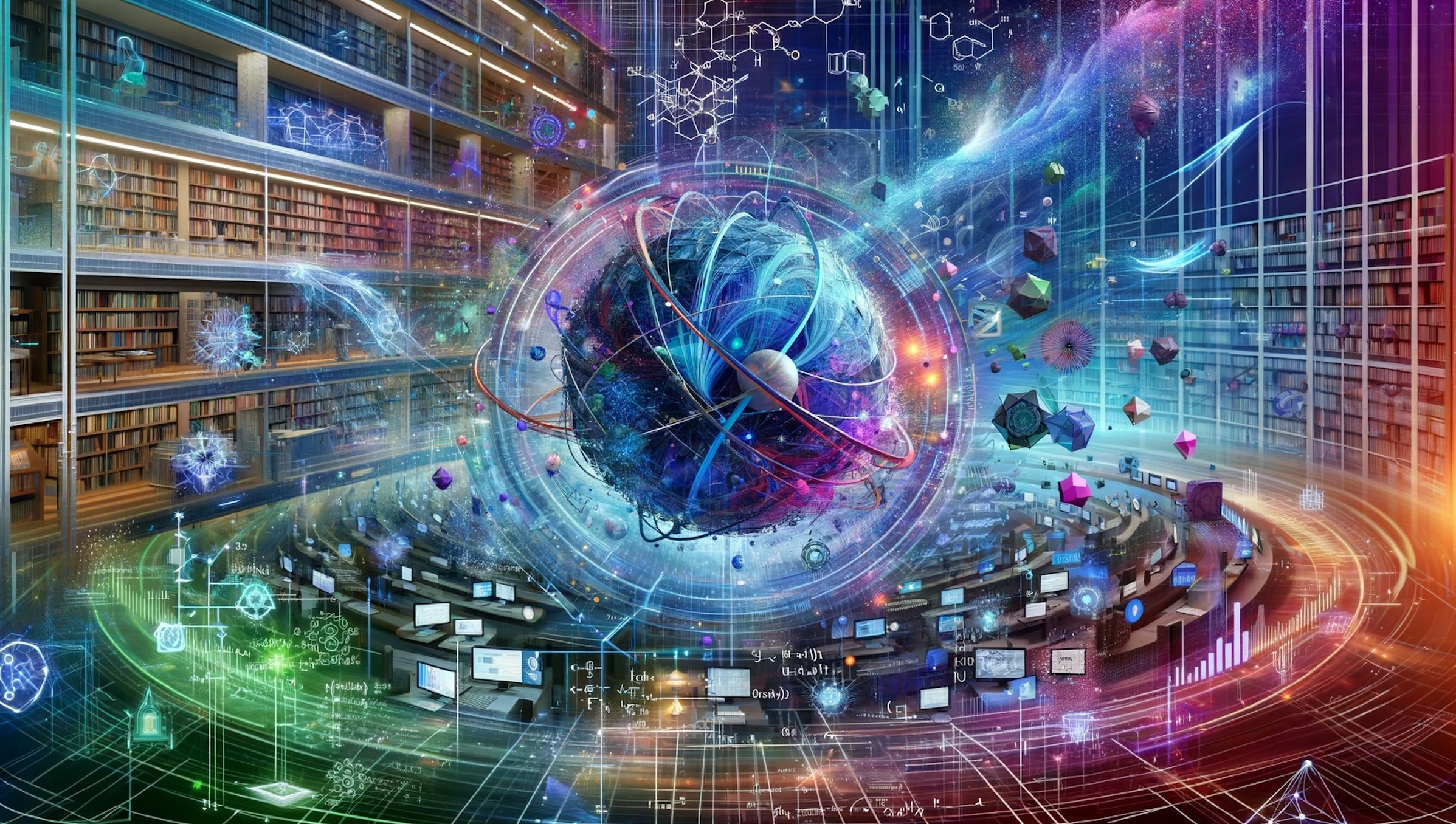Revolutionizing Research: the Impact of AI & Quantum Computing on Science — and the potential for libraries
I’ve been reading a lot about the impact AI and quantum computing are having on science. Here are some samples:
Some reflections:
AI and quantum computing are set to redefine scientific inquiry. From discovering new drugs to predicting climate change, the ability to process vast amounts of data and identify patterns are transformative. However, the real impact lies not just in the technology, but in the people and their relationships. The full potential is unlocked when experts from diverse fields join forces. I’m increasingly convinced that interdisciplinary collaboration is the key and a cornerstone for research libraries to build upon.
Bridging the Skill Gaps
AI, data science, and quantum computing require unique skill sets that many researchers might not have. This is where collaboration becomes essential. Imagine a biologist who’s an expert in genetic data but isn’t sure how to leverage AI to analyze it at a massive scale or how quantum computing can accelerate genomic data processing. By collaborating with data scientists and computer engineers, biologists can harness these technologies to uncover insights that would be impossible to achieve alone. Could research libraries programmatically invest in efforts that bring such experts together?
Combining Knowledge, Inviting Partners
Imagine a future where AI specialists, quantum engineers, and domain experts seamlessly interact. This partnership could lead to new questions, unique problems, or more effective models and applications. For example, in genomics, such work could result in algorithms capable of quickly analyzing pangenomic datasets, driving significant advances in personalized medicine.
Research libraries could become pivotal as conveners of these interdisciplinary relationships and facilitators of team science. Libraries could foster a wide array of interactions necessary to nurture and seed these types of connections. Can we use the potential of AI, quantum computing, and other emerging knowledge tools to invite such conversations and expand our collective identity?
Breaking Silos
Traditional academic structures often confine researchers to their specific disciplines, creating silos that hinder collaboration. A strategic aim for libraries could be to reduce these barriers or at least build bridges. In all of my readings and many of my ongoing conversations the future is clear: solutions to complex problems require interdisciplinary approaches. Imagine if breaking down silos was one of your organization’s strategic goals: what might that look like?
Consider this: a diverse team discovered new materials by using AI to analyze vast datasets and predict properties, accelerating discoveries and reducing costs. In this spirit, how might libraries not just be knowledge (and data and code) connectors, but also serve as social connectors between people, and functional connectors between methodologies and toolsets? What does that service model look like?
A Lesson from Digital Humanities
Perhaps reflecting on the evolution of digital humanities provides a valuable lesson for integrating AI and science? When digital humanities first emerged, libraries were at the forefront, providing critical support and resources. They helped scholars integrate digital tools into their research and pedagogy, facilitating new methods of analysis and interpretation. This proactive support was instrumental in advancing the field.
I sense a similar opportunity with AI. Just as libraries played a crucial role in the early years of digital scholarship, can we also be leaders in guiding the integration of AI into scientific inquiry? I can see a path forward by weaving together a collective tapestry of interdisciplinary tools, resources, and mindsets, along with the social fabric needed for such engagement. There is a gap right now that libraries could fill—the gap between emerging technologies and the need for more interdisciplinary-grounded culture and practices.
Some questions on my mind:
How can our library effectively bridge the skill gaps in AI, data science, and quantum computing among our researchers? What programs or training sessions can we implement to facilitate this?
What role should our library play in fostering interdisciplinary collaborations and breaking down (reducing) academic silos? How can we create environments (both physical and virtual) that encourage interaction and teamwork across different fields?
How can we measure the impact of our interdisciplinary initiatives on research outcomes? What metrics should we use to track progress and success?
What ethical considerations should we address in the use of AI and quantum computing in research? How can we develop guidelines that promote transparency, fairness, and accountability?
How can we advocate for funding and policy support for interdisciplinary research initiatives? What are the best ways to communicate the value and impact of these initiatives to stakeholders and funding bodies?
